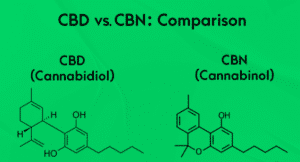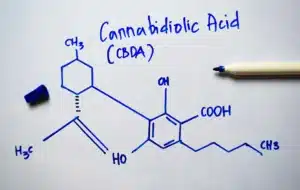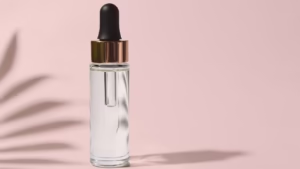Cannabis products, irrespective of their form or application, start as a highly concentrated form known as CBD distillate. Produced through a complex extraction process, CBD distillate decides the quality of the end product.
This guide explains how to make CBD distillate and its various applications. Understanding the process is crucial for producers and consumers alike.
Sections
ToggleWhat Is CBD Distillate?
CBD distillate is a super-concentrated extract created through the process of molecular distillation. It contains high levels of CBD and is known for its purity and potency. The distillation process separates valuable cannabinoids from other compounds found in the extract derived from the plant.
How to Make CBD Distillate in Four Simple Steps
1. Initial Extraction: The initial extraction process separates the valuable, cannabinoid-rich trichomes from the cannabis plant. Trichomes are sticky glands made of resin that grow on the flowers of a cannabis plant. To separate the trichomes, the plant matter is put through an initial process using supercritical CO2 extraction, light hydrocarbon extraction, or ethanol-based extraction.
2. Filtration Through Winterization: Crude oil still contains impurities such as plant lipids and chlorophyll after extraction. During winterization, ethanol is mixed with the extracted crude oil and stored below freezing for up to 48 hours. This causes unwanted compounds to thicken or harden, making them easily filtered.
3. Decarboxylation: Decarboxylation transforms the acidic forms of cannabinoids into their active forms. For example, CBDA (cannabidiolic acid) must be converted into CBD. This process involves heating the winterized, filtered crude oil at the appropriate temperature to convert the desired cannabinoids.
4. Final Distillation: The final distillation process uses precise temperature control and vacuum pressure to vaporize the different compounds in the crude oil. These vapors are then condensed into liquid form, producing a highly pure and potent CBD distillate.
Post-Distillation Refinement
To further enhance the quality of the distillate, CBD is recrystallized.
Recrystallization: In this process, the purity of the CBD distillate is further improved by dissolving it in an inert solvent. The solution is then cooled to form pure CBD crystals, which are then separated from the solvent. The resulting distillate is an even more purified CBD product.
A Look at the Equipment Used
The equipment required to produce CBD distillate includes initial extraction equipment, winterization and decarboxylation equipment, a press for direct filtration, and wiped film distillation equipment.
CBD distillate is a versatile and potent product requiring detailed extraction and purification. With the right equipment and expertise, producers can create high-quality CBD distillate for various applications.
Explore the Best Distillation Equipment Now!
Tips and Best Practices
To ensure that the quality of CBD distillate is high, ensure that best practices are implemented. Here are some tips:
Documentation and Record-Keeping:
- To ensure consistency, document each step of the production process meticulously. This includes keeping detailed logs of temperatures, pressures, and reaction times.
- Implement and maintain a system to quickly retrieve historical data such as batch numbers, yields, and equipment used for each run.
- Documentation can help in quality control and process optimization.
- Regularly review records to identify the most commonly occurring issues or areas for improvement.
Training and Expertise:
- Hire technicians with relevant scientific backgrounds to ensure consistent high-quality CBD distillate.
- Provide comprehensive initial training on equipment and procedures to ensure they are skilled enough to handle the equipment and processes.
- Conduct regular refresher courses on safety protocols.
- Regularly assess staff competency and provide feedback.
Quality Control:
- Establish strict quality control checkpoints throughout the distillation process.
- Regularly calibrate all equipment for accuracy.
- Conduct frequent testing of final products for potency and purity.
- Implement a robust system for handling and investigating deviations.
If you are looking for industrial and commercial-grade solutions, Root Sciences offers reliable equipment for every step of the quality control process, including distillation, calibration, and product testing. Check out our cannabis distillation equipment.
Applications and Uses of CBD Distillate
CBD distillate is known for its purity and potency, which makes it highly versatile. From edible to topicals, several products have been developed using CBD distillate.
- Edibles: CBD distillate can be used in food products easily, which is why it is used in gummies, chocolates, and baked goods. Its tasteless nature allows for seamless integration without altering flavors.
- Tinctures: Many CBD oils and tinctures use distillate as their base, which can be an effective carrier oil for easy and quick absorption.
- Topicals: Skincare products such as lotions and balms often contain CBD distillate due to its anti-inflammatory properties.
- Vape Products: CBD distillate can be used in vape cartridges and e-liquids. Its purity makes it suitable for inhalation methods.
Due to its purity and high effect, CBD distillate is experiencing a shift in consumer demand. More and more consumers want products that contain CBD distillate.
1. Increased Demand for Purity and Potency:
Due to its purity, CBD distillate has high potency, making it possible for consumers to experience more substantial effects from smaller doses.
Consumers are demanding pure CBD distillate without THC and are buying products that have third-party lab testing certificates. There’s growing interest in CBD isolates and broad-spectrum products.
2. Rise of Customizable Products:
Due to ease of production, brands can offer personalized CBD blends. Consumers can choose specific cannabinoid ratios and strengths.
Consumers also use CBD distillate to make their own CBD products at home, such as custom tinctures or topicals. A desire for control over ingredients drives this trend.
3. Integration into Wellness and Beauty Products:
Now, CBD-infused skincare products are becoming mainstream. Products range from anti-aging creams to acne treatments using CBD distillate.
Health and wellness supplements are also using CBD for several benefits. CBD-infused protein powders are emerging as preferred supplements.
4. Popularity in Edibles and Beverages:
CBD edibles such as gummies, CBD-infused honey, chocolates, and even savory snacks are becoming popular. The same happens with CBD-infused drinks, including sparkling waters, teas, coffee, cocktails, and mocktails.
5. Interest in Medical and Therapeutic Uses:
The use of alternative ingredients like CBD in pain management and anxiety relief has long been studied. Now, high-potency CBD products are approved for pain management. Its application in sleep aid products and complementing traditional treatments is also explored.
How to Use CBD Distillate
CBD distillate in its pure form is not fit for consumption. That’s why it is shipped as consumable products. Depending on your product type, there are various ways to consume CBD distillate.
1. Vaping
One of the most popular ways CBD distillate is consumed is in vape pens or cartridges. Vape cartridges contain CBD distillate, which, when heated, converts to inhalable vapor. It offers quick absorption through lung tissue and takes effect within minutes.
2. Capsules
CBD distillate is encapsulated in gel capsules to provide a precise, pre-measured dose. Mainly used for medical applications, capsules take longer to take effect but offer longer-lasting effects than vaping.
3. Dabbing
Some consumers use a dab rig to heat and inhale CBD distillate. This method provides intense, immediate effects. However, it is not recommended for beginners due to potency.
4. Adding to Pre-Rolled Joints
Another way to use CBD distillate is to apply it to the outside of cannabis joints. It enhances the effects of regular cannabis. This method is popular among recreational cannabis users as it creates a custom blend of cannabinoids.
5. Formulating Custom Products
Mixing CBD distillate with carrier oils for custom tinctures is a common practice for producing skin care products, foods, and supplements.
6. Microdosing
In this method, tiny amounts of CBD distillate are regularly consumed. Managing symptoms without solid effects typically involves 2-5mg daily.
Dosage and Potency: Guidance on dosage, considering the potency of CBD distillate
If you are considering using CBD distillate as a beginner, here are the dosage guidelines you should follow:
- Start with a low dose, typically 5-10mg of CBD.
- CBD distillate is highly concentrated, often 90%+ pure CBD. For reference, 1 ml of 90% CBD distillate contains about 900mg. Therefore, the dose should gradually increase until the desired effects are achieved.
- Factors like body weight, metabolism, and tolerance should be considered when deciding a dosage.
- Experienced users may use 20-50mg or more per dose.
- Consult product labels for specific concentration information.
- Be aware that different consumption methods affect onset and duration.
- Always consult a healthcare professional for personalized advice.
Conclusion
CBD distillate is a powerful and highly effective form of cannabidiol. Due to its purity and potency, it is versatile and valuable in the industry. CBD distillate is used in several products, offering various consumption methods, from edibles to topicals.
The production of CBD distillate requires precision and expertise. It also depends on proper equipment, skilled technicians, and stringent quality control. As the CBD market evolves, consumers demand purity, customization, and diverse forms of CBD distillate. Understanding proper dosage and considering individual factors are critical to a positive CBD experience, whether for wellness, relaxation, or potential health benefits.




